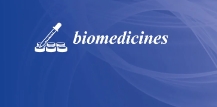Marta Mallardo 1 2, Ester Tommasini 3 4 , Sara Missaglia 3 4, Claudio Pecci 5, Ermanno Rampinini 5 6, Andrea Bosio5 , Andrea Morelli5, Aurora Daniele1 2, Ersilia Nigro2 7, Daniela Tavian3 4
- Dipartimento di Medicina Molecolare e Biotecnologie Mediche, Università degli Studi di Napoli “Federico II”, Napoli, Italy;
- CEINGE Biotecnologie Avanzate “Franco Salvatore” Scarl, Napoli, Italy;
- Laboratory of Cellular Biochemistry and Molecular Biology, CRIBENS, Università Cattolica del Sacro Cuore, Milano, Italy;
- Department of Psychology, Università Cattolica del Sacro Cuore, Milano, Italy;
- Human Performace Laboratory, MAPEI Sport Research Centre, Olgiate Olona, Italy;
- Sport and Exercise Discipline Group, Human Performance Research Centre, Faculty of Health, University of Technology Sydney, Moore Park, Sydney, NSW 2021, Australia;
- Dipartimento di Scienze e Tecnologie Ambientali, Biologiche, Farmaceutiche, Università della Campania “Luigi Vanvitelli”, Caserta, Italy.

Abstract
Physical activity promotes metabolic health and prevents lifestyle-related diseases. Adiponectin is specifically produced by adipose tissue and comes in three forms, differing in terms of weight: trimers (LMW), hexamers (MMW), and high-molecular-weight (HMW) oligomers. The oligomers are associated with the beneficial effects of adiponectin. In this study, we aimed to investigate the impact of a single bout of exhaustive exercise on adiponectin expression in 25 male amateur athletes, divided into two groups, one comprising young adults (YAs) (n = 15), and the other comprising middle-aged adults (MAs) (n = 10). Body fat was estimated through skinfold thickness. Adiponectin levels were assessed at baseline and at 15 min and 24 h post-exercise, while HMW oligomer levels were evaluated at baseline and at 24 h post-exercise. We observed a significant increase in total adiponectin at both 15 min and 24 h after exercise, with there being a more evident effect among the YA subjects. HMW oligomers also increased significantly after exercise both in the total sample and among the YA subjects, but this was not the case in the MA subjects. The increase in adiponectin levels was significantly associated with Powerpeak. Furthermore, a significant inverse correlation was found between basal adiponectin and VO2peak and Powerpeak. In conclusion, a single bout of exhaustive exercise can rapidly and significantly enhance the basal circulating adiponectin concentration, which seems to be negatively associated with maximal aerobic capacity.
Biomedicines 2024 Aug 2
DOI: 10.3390/biomedicines12081743